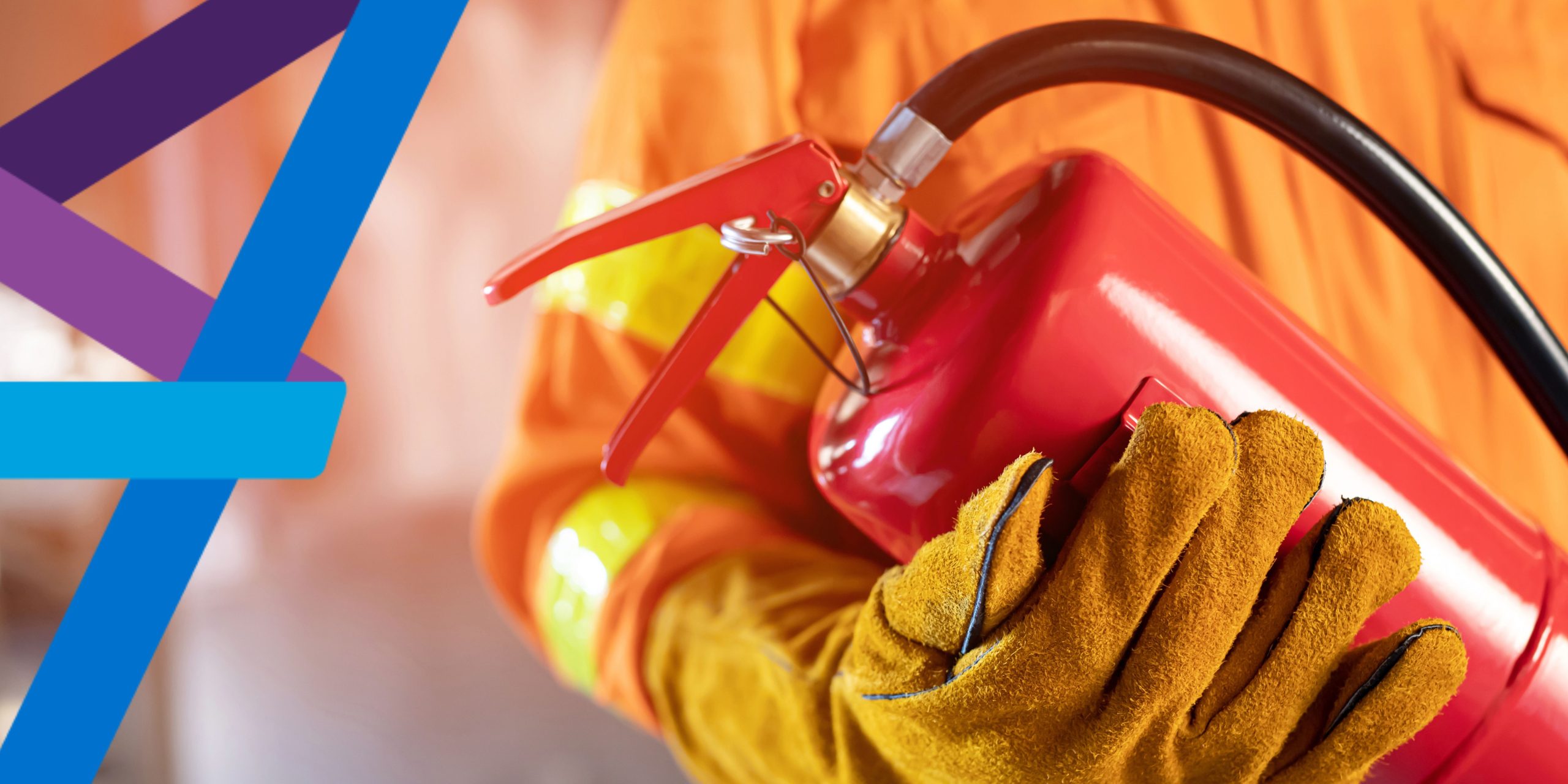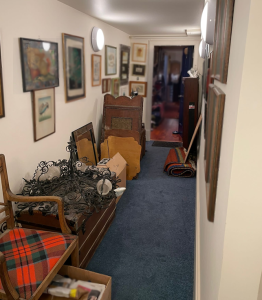Fire hazards in residential properties

We regularly carry out residential fire risk assessments for our clients, and below we look at the balance between reducing risk and tenants personalising their spaces.
The Regulatory Reform (Fire Safety) Order 2005 covers communal areas in residential properties which include buildings forming flats, University and College Halls of Residence, residential schools, as well as care homes.
The Responsible Person (usually the owning company, managing agent, or landlord) must carry out regular Fire Risk Assessments in these communal areas to ensure risks are identified and future issues prevented. Communal areas can include corridors and hallways, cleaners’ storage cupboards, reception areas, plant rooms, stairways, as well as any shared living or kitchen areas.
The most common hazard we come across is tenants storing personal items in hallways – this is illustrated well by this particularly extreme example! This looks like a hallway inside a flat, but this is the communal hallway and only escape route for the tenant – the front door to the flat is pictured at the back.

As Fire Risk Assessors, we analyse the actual risk that hazards cause and the potential impact. This includes the likelihood of an injury being caused, the scale of potential injury or damage, and how many people could be affected. In the above example there is a very high chance of injury being caused, and not just if evacuating due to fire as any of these items could topple over if knocked slightly. Increasing the risk is the flammability of the items – wooden furniture and cardboard boxes, and a bookcase and rug by the flat entrance door. Dangerous and/or combustible materials such as cardboard boxes, bags of rubbish, wooden furniture, and gas canasters should never be stored in escape routes even temporarily as you never know when a fire could break out.
There are a couple of approaches taken to managing communal areas;
- Sterile – also known as Zero Tolerance where no items are allowed (including pictures on the wall, or even a welcome mat)
- Managed – where a list of permissible items (often including maximum dimensions) are provided to tenants.
Most of the properties we visit use the managed approach and part of our assessment is using common sense to identify items causing a hazard. For example, a bike chained to the staircase which blocks half of the staircase is a hazard and must be removed. A reasonable size doormat outside a flat door is usually acceptable, though in very small corridors this may still cause a tripping hazard.
A very common hazard we see is prams, buggies and bikes stored in the entranceway which cause an obstruction – it’s our job to consider the risk that these cause in a potentially smoke-filled hallway with panicked residents evacuating, possibly in the dead of night, as well as the risks posed to emergency crews navigating the building.
For further information on our Fire Risk Assessment services click here or get in touch with us today!
Our content is correct at the date of publishing, but should not be taken as legal advice, and our articles don’t replace Risk Assessments. Armour will not be held accountable for any legal actions the reader may take.

